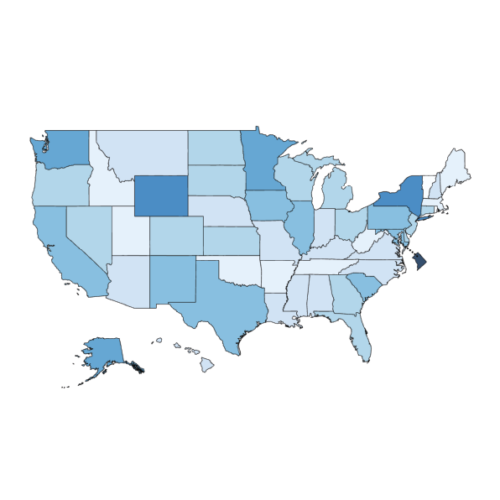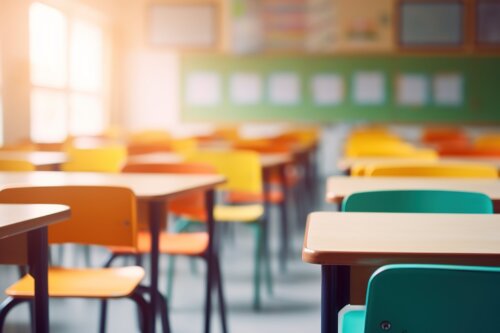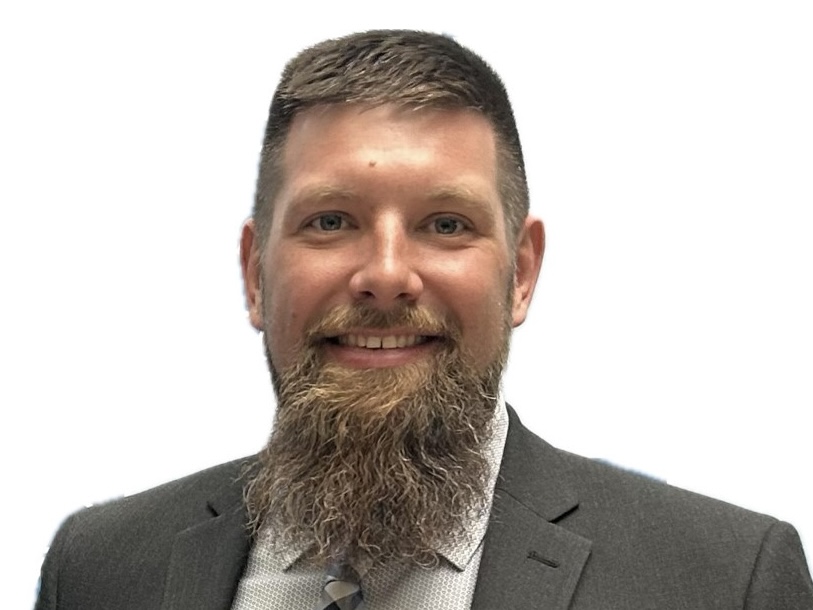- Home
- Blog Posts
- Turning Sustainability into Savings: Seeing Success in Des Moines, Iowa
Turning Sustainability into Savings: Seeing Success in Des Moines, Iowa
Written by National Center on School Infrastructure (NCSI),
Representing diverse public sector voices from across the country, NCSI’s Advisory Committee members bring a wealth of expertise and experience from the field that has helped shape NCSI’s priorities. Over the course of this year, we are featuring Advisory Committee members speaking about insights gained through their work to drive school infrastructure improvements. Here we interviewed Tyler Puls, Energy and Environmental Specialist at Des Moines Public Schools in Des Moines, IA, to hear about the benefits of building an efficient and responsive energy system in the District.
Tyler Puls is proof that smart budgeting and sustainability go hand in hand. As the Energy and Environmental Specialist at Des Moines Public Schools (DMPS), he’s been helping the district save energy, cut costs, and create healthier, more comfortable learning environments for over a decade.
“I’ve been with Des Moines Public Schools now for 10 years,” Tyler said. “Energy efficiency has been a big push for us.” And it shows: the district has completed “40-some geothermal buildings,” was named an ENERGY STAR Partner of the Year for Sustained Excellence, and continues to refine its systems to work smarter—not just harder.
Smart Systems, Fast Response
DMPS’s smart infrastructure supports the delicate balancing act between comfort and conservation. “All of our buildings come into one system,” he explained, referring to the district’s centralized building automation platform. “It allows us to see temperatures throughout the district, down to the classroom level. It tells us when things are broken.” That real-time monitoring helps the team stay ahead of maintenance issues and minimize disruptions.
“The central system tells us when something breaks. If we lose a pump or boiler overnight, alarms go off and security knows to call someone,” he says. “That’s been invaluable. Just this past weekend, a pipe burst in an elementary school library. Because of our systems and our team, we were able to respond quickly—carpets out, books moved, drying underway the same morning before the students even showed up.”
This responsiveness isn’t just about minimizing damage—it’s about maintaining continuity in education. “If we lose a boiler at 3 a.m., the question is, ‘Can we still have school?’ This system helps us answer that—fast.”
Prioritizing People, Protecting Resources
But it’s not just about emergency response—the daily experience of students and teachers in Des Moines’s school buildings matters deeply to Tyler. “We realized that our building occupants aren’t as happy as they could be,” he said. So Tyler is currently focused on going further, to develop a comfort system. “Here in Iowa, we get all four seasons—freezing winter temperatures and summer’s heat and humidity. So our most recent renovations have been focused on providing overall comfort.” And it’s working. “This winter, we had two weeks of below freezing temperatures and very few complaints. So I’d say we’re making big wins in the comfort arena!”
Behind the scenes, Tyler is constantly thinking about how to do more with less. “Our utility bills come out of the general fund. But our number one expense is people,” he said. That means every efficiency win is a step toward protecting critical staffing and student services. “We’re trying to figure out what we in facilities can do to alleviate pressure on the general fund, because we never want to cut people.”
Energy Upgrades—For Economic Benefit
“We’ve done the low-hanging fruit,” Tyler explained—like LED upgrades, which the team tackled by the truckload. “I was buying a semi-load of LED tubes at a time,” he laughed. “We’ve done quite a bit of the easy stuff. Now it’s, what do you do next?” For now, that means doubling down on projects with both environmental and financial benefits.
That mindset drives him to explore projects like solar energy. One installation is already powering about 80% of an elementary school. “Our payback is about 12 to 13 years,” he said—solid numbers, but he’s waiting for even better returns before scaling up further.
A Culture of Collaboration—And Trust
It’s a model of steady, strategic progress—one that combines long-term planning with a can-do spirit. “If I have a project that I want to do, if I can justify it, we’ll get it done.”
Des Moines may be a mid-sized district, but it punches well above its weight. Puls credits a collaborative culture and a tight-knit team that’s laser-focused on creating great places to learn. “Everybody’s got a job to do and everybody recognizes that. But everybody’s open to allowing everybody to sit at the table.”
Big Plans, Bigger Impact
The district is currently wrapping up its facilities plan for the next five years, and a large bond is on the horizon. The goal? Rebuild, renovate, and right-size a system of aging schools. “The average age of our buildings is 71 or 72 years old,” he said. The plan calls for additions, full replacements, and in some cases, closing small schools to better align resources.
That can be tough on communities, but Tyler understands the stakes: “If you keep the school, the services there will probably be less than if we combine two schools.” It’s a conversation about fairness, efficiency, and the kind of learning environments students deserve.
Looking ahead, he’s excited about making more of the district’s behind-the-scenes work visible—like dashboards that track energy use across buildings. “People love a dashboard. We love a dashboard, too,” he said. “How do we show our energy usage and really compare it and motivate people at the building level to make some changes?”
The Ultimate Goal: Facilities That Let Teachers Teach
At the heart of it all is a simple goal: let teachers teach. “Facilities should run in the background, making sure that everything works. The lights need to turn on. We don’t need to be a distraction,” Puls said.
That’s what sustainability looks like in practice: energy- and cost-efficient systems that provide the foundation for comfortable school environments. In that way, Tyler knows, students and learning can always come first.




